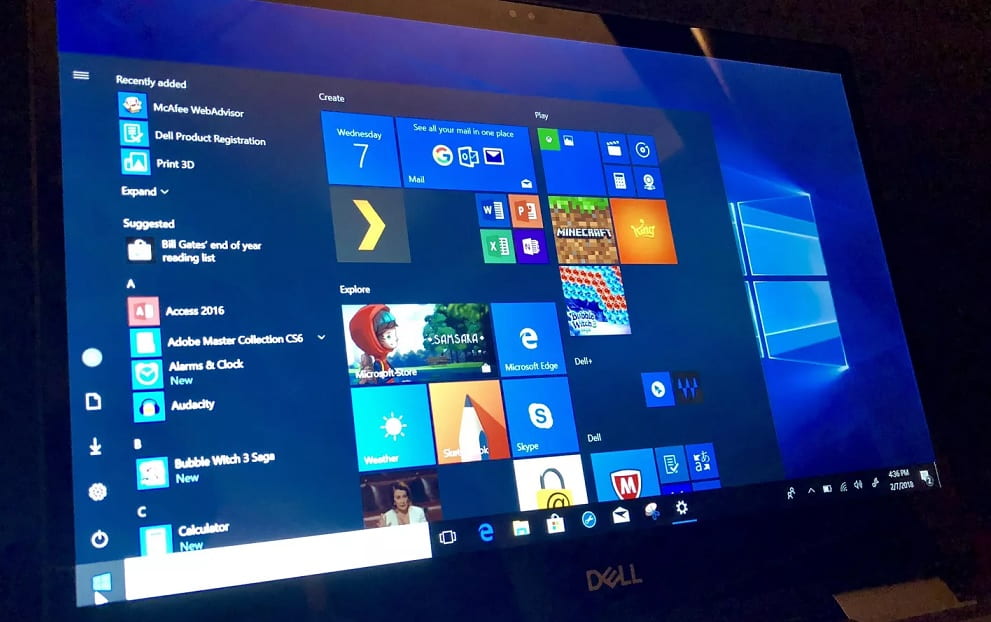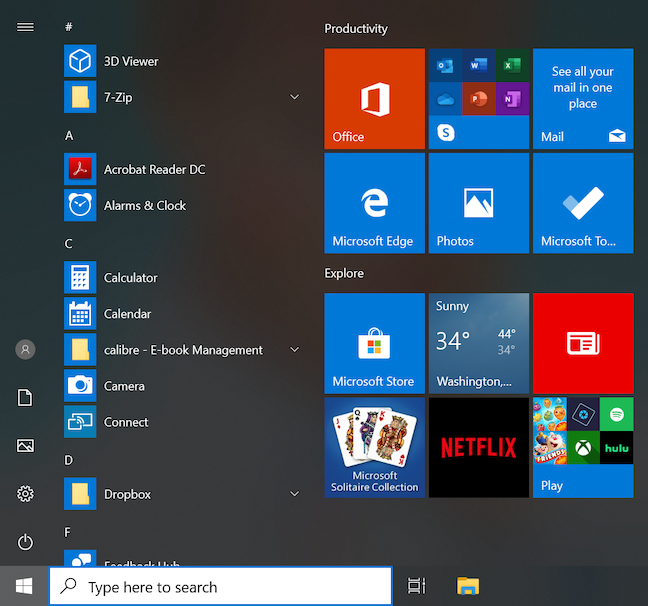
The result looks like the worst of both worlds instead of the best. The left column tries to do too much in too little space. The tiles that make sense when they’re full screen look wrong on a menu. When I first saw it at the first Microsoft conference presenting Windows 10 many months ago, I thought it was a mistake or a joke. The result in the most recent test build of Windows 10 is shown in the screenshot above. Apparently the goal is to combine the best elements of the Windows 7 Start menu and the Windows 8 Start screen. When Microsoft announced Windows 10 (the name deliberately chosen to create distance from Windows 8), the most important part of the announcement for normal, non-technical people was that the Start menu was returning. No matter how I or anyone else feels, the market has stated its opinion of Windows 8 loudly and unambiguously. I’m not pretending that everyone agrees on anything. I took to it right away and use it on all my computers. It’s flexible and effective and I understand and appreciate all the design choices. I should mention that I love the Windows 8 Start screen. The advantages of the Start screen are theoretical and most people are not interested in giving it a chance. Windows 8 is similarly disliked, but the Start screen gives people something to point at to justify why they don’t like the entire OS. Few people could identify why they didn’t want to use Vista they had “heard” that it wasn’t any good. Microsoft had been in this position before with Vista, which suffered the same fate. It has the stink of death and Microsoft can’t wait to consign it to the dustbin of history. Three years later and Windows 8 has barely eked out 15% of the worldwide Windows market.

Oh, and it arranged the departure of Sinofsky and every other executive who had been part of the disastrous planning for Windows 8. Over the next two years, Microsoft backed away from some of the more harsh design choices, adding an onscreen power button and search box, putting an arrow onscreen pointing down to the list of all programs, and putting an X in the upper right corner of the new full screen Windows 8 apps. Microsoft had always been careful to give users a choice to use older designs before enforcing a big change but gambled big on the Windows 8 Start screen – and lost. Sinofsky’s insistence that he could force through a pure new vision caused him to make a catastrophic decision in hindsight: there is no built-in way to go back to a Windows 7-style Start menu. When first released, many important controls were off-screen, with no visible power button or search box, and no obvious indication that the list of all programs was down below the main Start screen. Windows 8 launched with a radically new Start screen, running full screen and filled with large tiles that display dynamic content from each program when possible. But he also believed that Microsoft could exercise the same clout that Apple used to dictate its new design choices and force users to adopt them without suffering any ill effects from a backlash. He believed that Microsoft could create a new interface that would look consistent on computers, laptops, and tablets – not a bad idea. Steven Sinofsky, former president of Microsoft’s Windows division, had a vision for Windows 8 that did not turn out well. It was a familiar, known quantity, and as it turned out, a lot of people felt comfortable with the Start menu along with other familiar user interface elements. When Windows XP was released in 2001, the Start menu expanded to two columns the Windows 7 Start menu is only slightly changed from that fourteen-year-old design.Īlmost every one of the 1.5 billion Windows users had spent their entire computer lifetime using that Start menu. Microsoft introduced the Start menu twenty years ago with Windows 95. Let’s review a little history before we look closely at the above screenshot from the latest Windows 10 Preview. The Start menu, from Windows 95 to Windows 8 It makes me recoil in irritation.Īnd the revamped Start menu, more than any other single thing, was responsible for the downfall of Windows 8, one of the great marketing debacles of our time. No effort is being spared to make Windows 10 into the operating system that everyone will love.īecause when I look at the Start menu in Windows 10, I see a cluttered mess. Microsoft is betting the company that it can put Windows 8 behind it and extend the dominance of Windows on our computers and laptops for the foreseeable future.

It will be given away for free to more than a billion people worldwide more or less every computer in the world running Windows 7 or Windows 8.1 will be offered a free upgrade for a year after Windows 10 is released. There are genuinely innovative new features. Its technical underpinnings are solid and mature. Windows 10 is being tested by millions of people as it enters its final development phase before being released later this summer.


 0 kommentar(er)
0 kommentar(er)
